Yellow mycelium or Yellow liquid on mushroom mycelium: contamination or mycelium piss
Sometimes you can observe healthy mycelium with small amount of clear yellow, yellowish, orange or brown liquid forming on the surface of the mycelium.
It can be noticed in spawn jars during colonisation period.
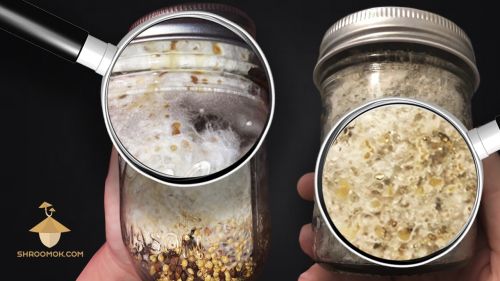
It can be noticed on mushroom cake during top layer colonisation or fruiting period
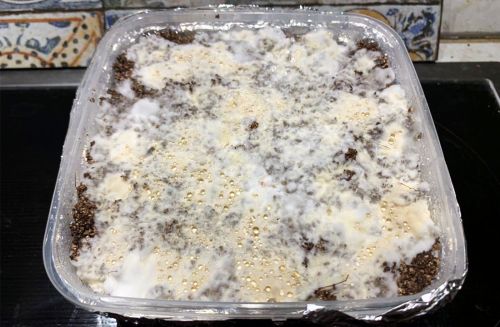
What is it? Is there something to worry about?
What are mushroom metabolites
Secondary mycelium metabolites (aka mycelium exudate, mushroom urea, mycelium piss, mycelium pee) — it is a waste products of fungal metabolism or mushroom exudate.
🔬 Biochemical analyses of the exudates showed that acid phosphatase, β-glucosidase, acid and alkaline protease, RNase polygalacturonase and cellulase enzymes as well as oxalic acid and ammonia were present
In short and simple metabolites consist of acids, exopolysacharides, waste products and antibiotics, which are naturally secreted by mycelium cells. They can be found on different species of mushrooms: wild mushrooms, magic mushrooms, gourmet and edible mushrooms.
Metabolites are the natural immune response of mycelium to stress or pathogens.
Symptoms of mushroom piss
✅ Color of liquid: yellow, orange or brown.
✅ Liquid is transparent, not cloudy.
✅ NO slime.
✅ NO smell (rotted, sweet, sour, cider). Smell of soil and mushrooms is totally normal!
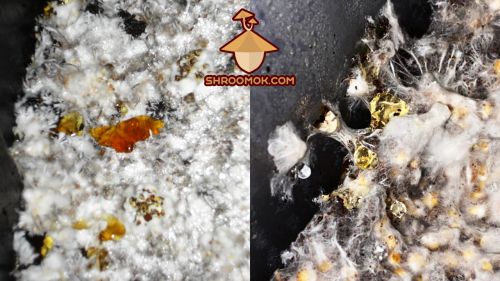
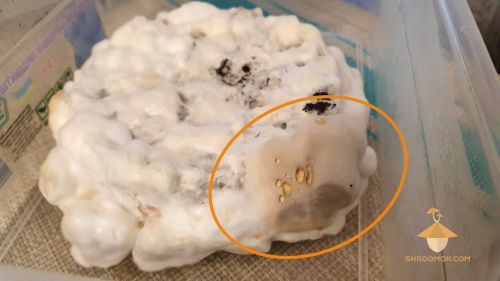
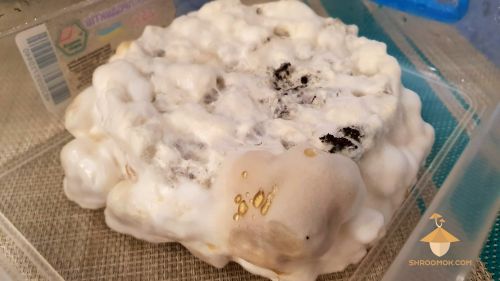
Main causes of mycelium metabolites
Metabolites is a reaction to environmental stress or immunity response to contaminants:
🆘 over misting, water pools on mycelium
🆘 direct sunlight
🆘 high temperature
🆘 extremely dry mushroom cake
🆘 aged mycelium (aged spawn jars)
🆘 lack or excess of nutrients in the substrate
🆘 a symptom that mycelium is fighting with pathogenic microorganisms (bacteria, mold)
🆘 this also happens if you mix several strains of mushrooms. Their colonies struggle with each other and create yellow/brown borders between
🆘 stroma and overlay are accompanied by mushroom pee
🆘 mycelium tissue damage
🔴 Recommended: Fruiting period. Pinhead initiation. Growing parameters for Psilocybe Cubensis
What is the strange yellow-brown line on the mycelium
Let's figure out one case from Shroomok Discord Community. This is a great example to show you metabolites sectoring.
Question: Strange yellow-brown line on the mycelium. Anyone know what this could be?
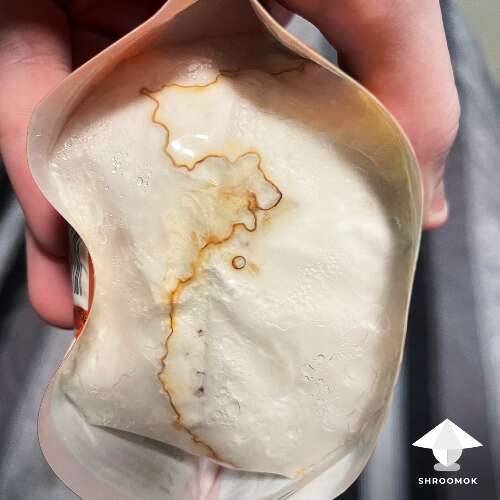
Answer from Shroomok:
Here are mushroom metabolites and sectoring process. Why did this happen?
In this way different colonies of mushroom mycelium or bacteria/mold can temporarily share territory and useful nutrients in the substrate. Since we are dealing with two different microorganisms or different mushroom colonies that compete with each other, usually clear boundaries form between them where they cross aka sectors.
I don't see bacterial or mold contamination so far. Just a struggle between mushroom relatives. As a result we see such immunity reaction of mycelium — metabolites.
On the photo below more intense metabolites. It is a sign of struggling with pathogens (i.e. mild bacterial contamination). Spawn can be used for the next steps of cultivation, but you should check it thoroughly (smell, color) and remove weird areas.
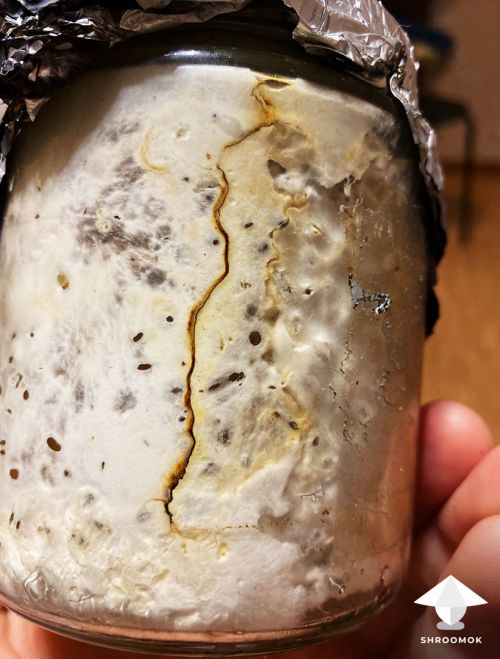
Yellow mycelium as a type of metabolites
Occasionally, snow-white mycelium can turn beige, yellow or even brown during colonisation period in the jar or during fruiting period in the fruiting chamber. It is also a kind of fungal exudate — waste products of mycelium.
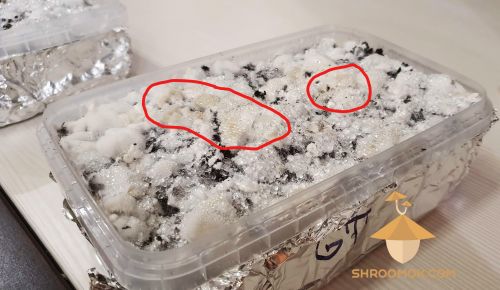
This case can be as a reaction of fungal immunity to a minor contamination. It means mycelium struggles successfully! Observe and be attentive.
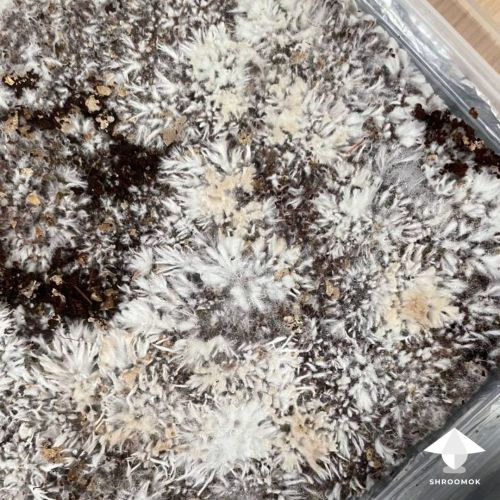
Minor fungal pigmentation is very common in mushroom growing and nothing to worry about! When mycelium contact and digest other materials from bulk substrate (coco coir, hay, straw, sawdust etc.) it can pick up some amount of matter that change its color. In most cases, yellowish or beige mycelium is not harmful and won't affect its ability to produce healthy mushroom fruit bodies.
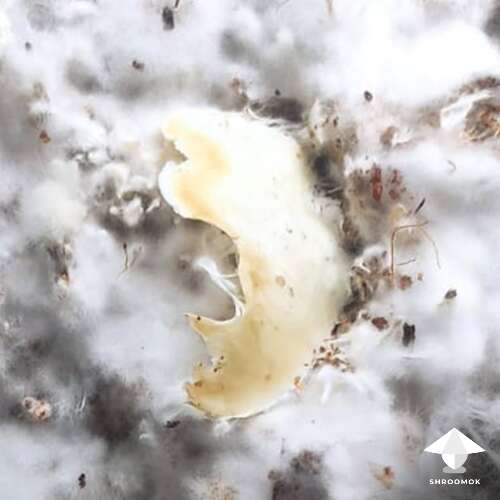
Mycelium metabolites or contamination
If mycelium ingests excess of anything that may become toxic enough to eventually harm, disable or kill it, mycelium produces waste exopolysaccharides as antimicrobial agents, acids, excrete enzymes and tries rid itself off that excess.
Metabolites exude is a reaction to stress or response to mild contamination. Mushroom metabolites is a natural mushroom antibiotic and immunity reaction. This means your mycelium is fighting off pathogens or stress. It’s not a contamination itself!
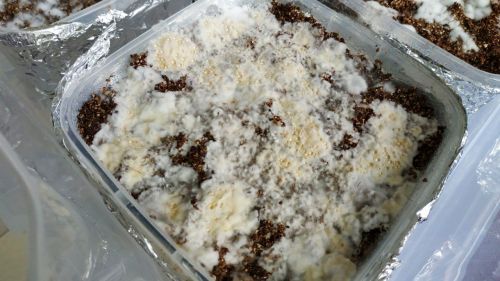
If mushroom mycelium struggles with contaminants, such mushroom cake requires close attention. Very often mycelium copes with mild contamination successfully.
However there are several examples of contaminations are easy to confuse with metabolites. What are they?
Bacterial contamination
It is easy to identify bacterial contamination in mushroom cake by slimy liquid and the specific smell.
Fermented, rotted, cider, sweet and sour, stale, yeasty, smell of dirty socks — those are clear signs of bacterial (also yeast) contamination. Healthy mycelium has an 'earthy' or mushroom smell.
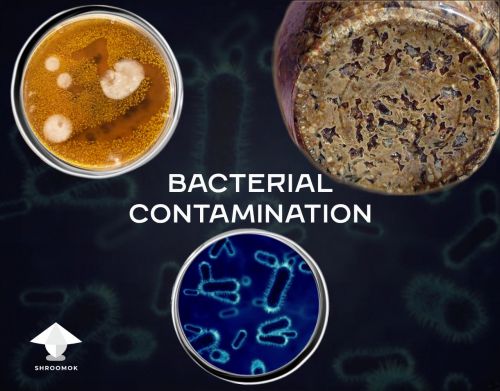
🟠 Check out full guide: Bacterial Contamination Guide
However, it may be hard to feel the smell in a spawn jar/bag. Here is an example with a sign of bacterial contamination in spawn jar:
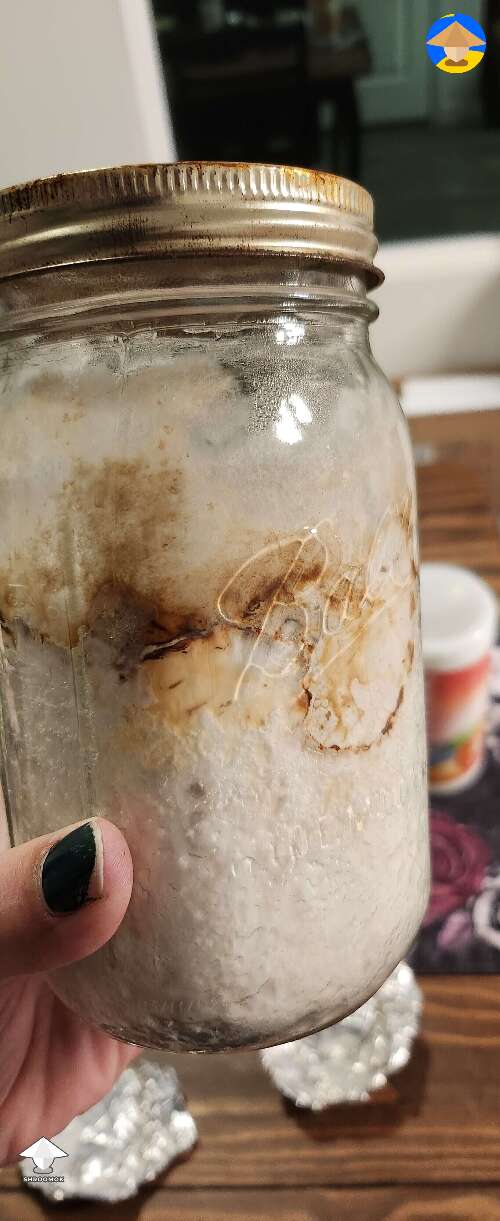
Wet Bubble disease
Newbie cultivators often confuse secondary metabolites with Wet Bubble disease aka Mycogone.
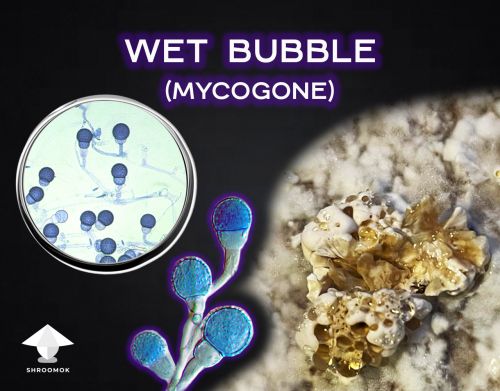
It seems similar to metabolites, but Mycogone has specific features. An amber liquid with a rotten smell oozes from pins, primordia and clots of mycelium.
Check out full guide: Mycogone contamination aka Wet Bubble disease
Aspergillus yellow mold
Newbie cultivators confuse pigmentation with Aspergillus spp. (Aspergillus flavus). This mold has yellow powdery texture without any liquid on mycelium.
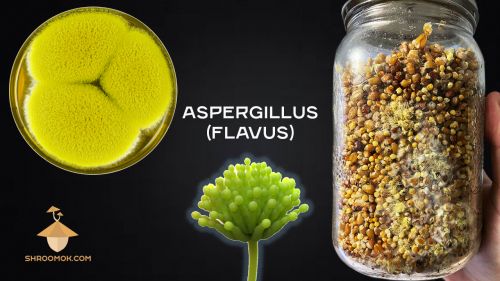
Afterwords
For more examples check out 📸 Metabolites photo gallery
If you find this guide helpful, please support me with a cup of coffee on ☕️ buymeacoffee
Join Shroomok Community on Discord or Reddit for questions and sharing your experience.
You can also leave your comments on this page below ⬇️
Have a happy growing and healthy shrooms!
Peace, Shroomok ❤️


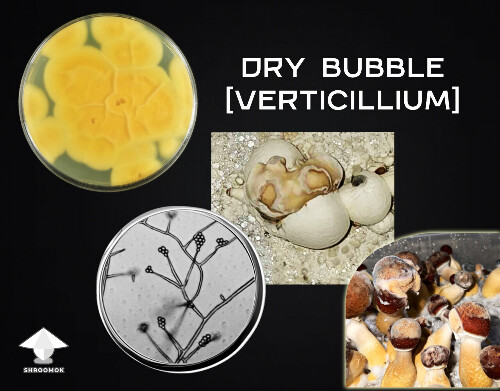
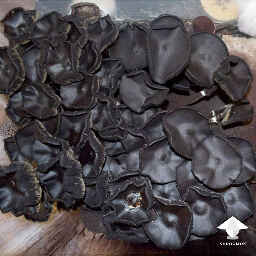
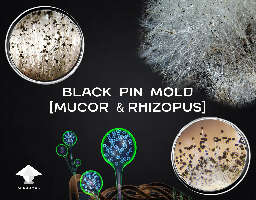
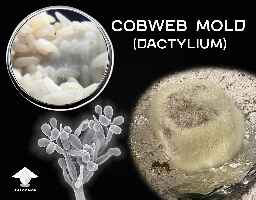
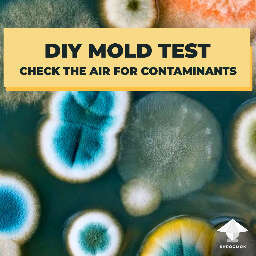
Comments
You talk about metabolites being "clear color", while showing a picture of amber colored fluid. Then scrolling down, you talk about amber colored wet bubble disease.
The more and more I look into how all of you are growing these things, I notice none of you actually knows 100% what you're talking about. Just a bunch of guessing with success, and then all of you preach that your way is the only way.
Its fungus... its mold.. mold easily grows. it's not rocket science, and none of you really knows what you're doing.
none of who?
I have a pool of mycopiss in a low area of my
Coco layer in my monotub. My GT has just started fruiting and looks healthy otherwise.
Should I leave it there or soak it up with paper towel ?
@Billeevit, metabolites mainly appear in water pools on the cake, try to avoid it. Here are 2 options for your choice.
1) Mild metabolites is not a problem, so you can leave them. Wait till harvesting, harvest your shrooms, then make rehydration (soaking) mushroom cake in water. So that, you wash metabolites and rehydrate the cake for the new flush.
2) You can use paper towel and apply it to absorb excess of moisture and metabolites. But be gentle, it's easy to irritate or even damage mycelium tissue and bruises appear.
Good luck and have a great harvest!
I have the yellow liquid, it happened after my first flush. Will, actually my wife did the first flush. And she was very rough with the cake. In fact, she broke it in half. Could this be the cause of this yellow e substance
hi! can i have some sources about the yellow liquid color one?
Add comment